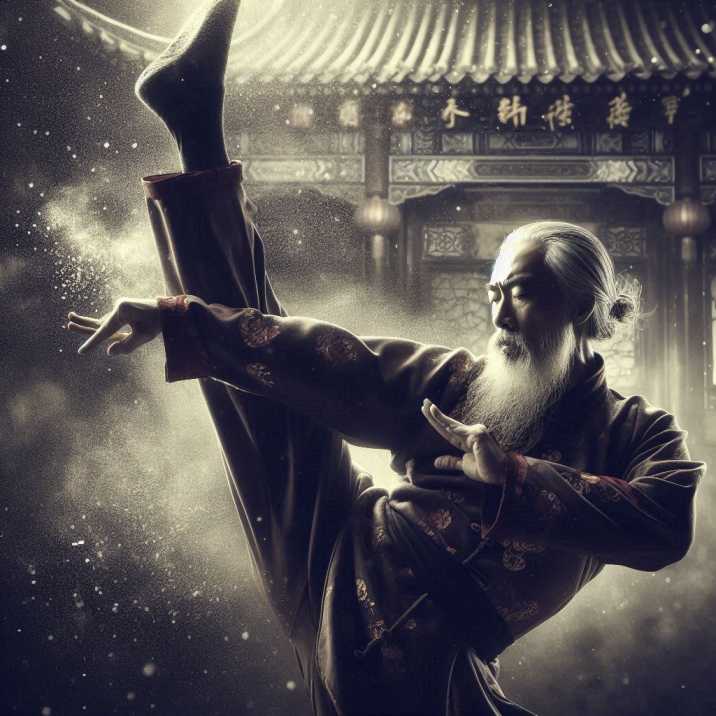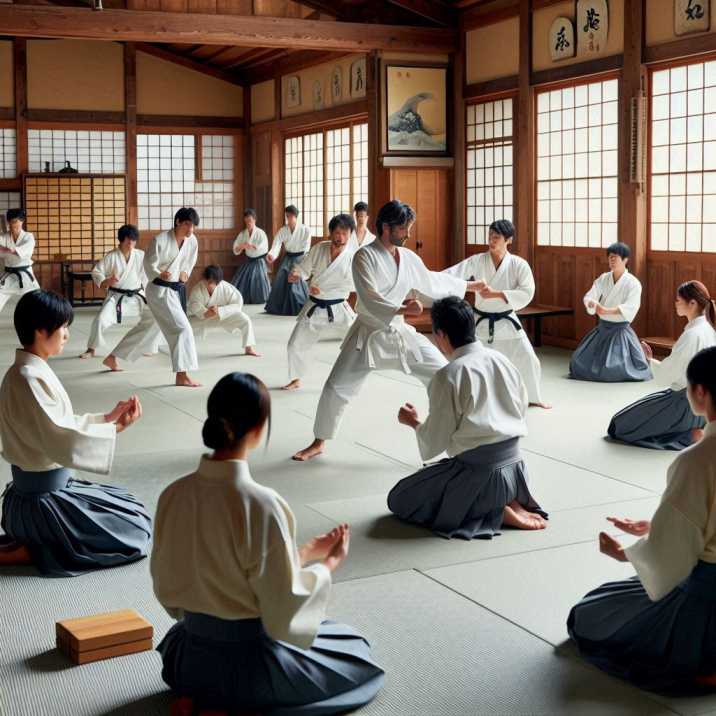Introduction
Table of Contents
Martial arts have a rich history rooted in the traditions and cultures of various countries. Among the most renowned are Chinese martial arts vs Japanese martial arts, each possessing unique philosophies, techniques, and styles. For enthusiasts and practitioners alike, understanding the differences and similarities between these two forms can provide deeper insights into their practice and cultural significance.
This comprehensive guide will explore the captivating world of Chinese and Japanese martial arts. From their origins and development to the distinct techniques and philosophies that define them, we’ll provide a detailed comparison that aims to enlighten and inform. Whether you’re a beginner looking to choose a martial art to practice or a seasoned practitioner wanting to expand your knowledge, this blog post has something for everyone.

Chinese Martial Arts vs Japanese Martial Arts:
The Historical Roots of Chinese Martial Arts
Chinese martial arts, commonly known as Kung Fu, have a history that dates back thousands of years. The origins are deeply intertwined with Chinese culture, philosophy, and religion.
Ancient Beginnings
The earliest forms of Chinese martial arts can be traced back to the Shang Dynasty (1600–1046 BCE). Initially, these practices were developed for military purposes, focusing on combat techniques and self-defense.
Influence of Philosophy and Religion
Over time, Chinese martial arts evolved to incorporate elements of Taoism and Buddhism. The Shaolin Monastery, established in the 5th century, became a pivotal center for martial arts, integrating Zen Buddhism’s spiritual practices with physical training.
Development and Styles
Chinese martial arts branched into various styles and schools, each with unique characteristics. Styles like Tai Chi, known for its slow and flowing movements, emphasize internal energy and balance. On the other hand, Wing Chun focuses on close-combat techniques and efficiency.
The Historical Roots of Japanese Martial Arts
Japanese martial arts, known as Budo, also boast a rich historical background, with influences from both indigenous practices and foreign techniques.
Early Influences
Japanese martial arts have roots in the ancient samurai warrior class. During the Heian Period (794–1185), the samurai began developing combat techniques that would later evolve into modern martial arts.
The Samurai Code
Bushido, the samurai code of ethics, played a significant role in shaping Japanese martial arts. This code emphasized honor, discipline, and loyalty, which are still integral to martial arts like Kendo and Karate.
Evolution and Styles
Japanese martial arts diversified into various forms, including Judo, Aikido, and Ninjutsu. Each style has unique principles and techniques, with Judo focusing on throws and grappling, Aikido on harmonious movement, and Ninjutsu on stealth and strategy.
Philosophical Differences
The philosophies underpinning Chinese and Japanese martial arts are crucial to understanding their distinct approaches and methodologies.
Chinese Martial Arts Philosophy
Chinese martial arts are heavily influenced by Taoist and Buddhist principles. Concepts like Yin and Yang, the balance of opposites, play a crucial role in the practice and application of techniques. The focus is often on internal energy (Qi) and its cultivation through meditation and controlled breathing.
Japanese Martial Arts Philosophy
Japanese martial arts are deeply rooted in Bushido, emphasizing discipline, honor, and a warrior’s spirit. The philosophy centers on perfecting one’s character through rigorous training and adherence to ethical principles. The concept of “Mushin” (no mind) is also vital, promoting a state of mental clarity and focus.
Technical Differences in Chinese and Japanese Martial Arts
While both Chinese and Japanese martial arts include various techniques, their execution and principles often differ significantly.
Chinese Martial Arts Techniques
Chinese martial arts encompass a wide range of techniques, from striking and kicking to joint locks and throws. Styles like Shaolin Kung Fu are known for their acrobatic movements and high kicks, while Tai Chi emphasizes slow, deliberate motions to cultivate internal energy.
Japanese Martial Arts Techniques
Japanese martial arts techniques are often more straightforward and pragmatic. Karate, for example, focuses on powerful strikes using punches, kicks, and knee strikes. Judo, on the other hand, emphasizes grappling and throwing techniques, aiming to subdue an opponent quickly and efficiently.

Training Methods of Chinese and Japanese Martial Arts
The training methods in Chinese and Japanese martial arts reflect their philosophical and technical differences.
Chinese Martial Arts Training
Training in Chinese martial arts often includes a combination of physical conditioning, forms (katas), sparring, and meditation. Forms are a series of pre-arranged movements that help practitioners develop technique, balance, and internal energy. Additionally, weapons training is common, with traditional weapons like the staff, sword, and spear.
Japanese Martial Arts Training
Japanese martial arts training places a strong emphasis on discipline and repetition. Practitioners often engage in drills to perfect individual techniques before moving on to sparring and live practice. Kata, or forms, are also integral, providing a structured way to practice techniques in a controlled environment. Weapons training, such as with the katana or bo staff, is also prevalent in styles like Kendo and Kenjutsu.
Cultural Significance
The cultural significance of martial arts in China and Japan extends beyond physical training, deeply influencing their respective societies.
Chinese Martial Arts in Culture
In China, martial arts are considered a national treasure, celebrated in festivals, films, and literature. Kung Fu has become a symbol of Chinese cultural identity, often associated with legendary figures like Bruce Lee and Jackie Chan. Martial arts schools and monasteries continue to attract students from around the world, preserving the art’s rich heritage.
Japanese Martial Arts in Culture
Japanese martial arts are equally revered, with a strong presence in modern Japanese culture. The principles of Bushido continue to influence various aspects of Japanese society, from corporate culture to education. Martial arts like Judo and Karate are also popular sports, with many practitioners competing at national and international levels.
Health Benefits
Both Chinese and Japanese martial arts offer numerous health benefits, contributing to physical, mental, and emotional well-being.
Physical Health
Practicing martial arts improves cardiovascular health, strength, flexibility, and coordination. The dynamic movements and rigorous training can lead to improved overall fitness and weight management.
Mental Health
Martial arts training promotes mental clarity, focus, and discipline. The meditative aspects of practices like Tai Chi and Aikido help reduce stress and anxiety, fostering a sense of inner peace and balance.
Emotional Health
The principles of martial arts encourage self-confidence, resilience, and emotional control. Practitioners learn to manage their emotions, respond calmly to stress, and develop a positive mindset.
Modern Applications
While traditional martial arts retain their cultural significance, modern applications have expanded their relevance.
Self-Defense
Martial arts provide practical self-defense skills, empowering individuals to protect themselves in dangerous situations. Techniques from styles like Wing Chun and Krav Maga are often incorporated into self-defense courses.
Competitive Sports
Many martial arts have evolved into competitive sports, with organized tournaments and events. Judo and Taekwondo, for example, are Olympic sports, drawing athletes from around the world.
Fitness Programs
Martial arts-inspired fitness programs, such as kickboxing and MMA training, have gained popularity for their high-intensity workouts and comprehensive training regimes.
Choosing the Right Martial Art
Selecting the right martial art depends on individual preferences, goals, and physical capabilities.
Assessing Your Goals
Consider what you hope to achieve through martial arts training. Are you looking for self-defense skills, physical fitness, mental discipline, or cultural enrichment? Understanding your goals can help narrow down the options.
Evaluating Styles
Research the different styles of Chinese and Japanese martial arts, considering their techniques, philosophies, and training methods. Attend classes or watch demonstrations to get a sense of each style’s unique characteristics.
Finding the Right School
Look for reputable martial arts schools with qualified instructors. Consider factors like class size, training facilities, and community atmosphere. Speak with current students to get feedback on their experiences.
Common Misconceptions
There are several misconceptions about Chinese and Japanese martial arts that deserve clarification.
Myth 1: Martial Arts Are Only for Fighting
While martial arts teach combat skills, their benefits extend far beyond fighting. They promote physical fitness, mental discipline, and personal growth.
Myth 2: Only Young People Can Practice Martial Arts
Martial arts are suitable for all ages, with many schools offering classes for children, adults, and seniors. The training can be adapted to accommodate different fitness levels and abilities.
Myth 3: You Need to Be Fit to Start Martial Arts
Martial arts training improves fitness over time, so you don’t need to be in peak physical condition to start. Instructors will guide you through the basics and help you build strength and endurance gradually.
Integrating Martial Arts into Daily Life
Incorporating martial arts principles into daily life can lead to holistic well-being.
Mindfulness and Meditation
Practices like Tai Chi and Aikido emphasize mindfulness and meditation, helping practitioners stay present and focused. Integrating these techniques into daily routines can reduce stress and enhance mental clarity.
Discipline and Routine
Martial arts training instills discipline and the importance of routine. Establishing a consistent practice schedule can improve time management and productivity in other areas of life.
Community and Connection
Joining a martial arts school fosters a sense of community and connection. Building relationships with fellow practitioners can provide support, motivation, and a shared sense of purpose.
Table of Information on Chinese and Japanese martial arts:
| Aspect | Chinese Martial Arts (Kung Fu) | Japanese Martial Arts (Budo) |
|---|---|---|
| Origin | Ancient China | Ancient Japan |
| Philosophical Influence | Taoism, Buddhism | Bushido, Zen Buddhism |
| Techniques | Fluid, circular movements; internal energy focus | Linear, direct techniques; discipline focus |
| Training Methods | Forms (katas), sparring, meditation | Drills, forms (kata), sparring |
| Popular Styles | Tai Chi, Wing Chun, Shaolin Kung Fu | Karate, Judo, Aikido |
| Cultural Significance | National treasure, celebrated in festivals | Integral part of modern culture, competitive sports |
| Health Benefits | Improves flexibility, internal energy, stress reduction | Enhances physical fitness, mental clarity, discipline |
| Modern Applications | Self-defense, fitness programs | Competitive sports, self-defense |
Conclusion
Chinese and Japanese martial arts offer a rich tapestry of traditions, techniques, and philosophies. Whether you’re drawn to the fluid movements of Tai Chi or the disciplined practice of Karate, there’s a martial art that can cater to your interests and goals.
By exploring the unique characteristics and benefits of each, you can make an informed decision on which martial art to pursue. Remember, the journey is just as important as the destination. Take the first step today, and discover the profound impact martial arts can have on your life.
For personalized guidance and expert advice, consider booking a session with one of our martial arts instructors. They can help you refine your technique, set achievable goals, and support your martial arts journey.
FAQs
What is the main difference between Chinese and Japanese martial arts?
Chinese martial arts, or Kung Fu, often emphasize fluid, circular movements and internal energy cultivation. Japanese martial arts, or Budo, are typically more linear and pragmatic, focusing on discipline and direct techniques.
Can I practice both Chinese and Japanese martial arts simultaneously?
Yes, many practitioners study multiple martial arts styles to gain a broader perspective and enhance their skills. However, it’s essential to manage your training schedule to avoid burnout.
Are there any age restrictions for practicing martial arts?
Martial arts are suitable for all ages, with classes available for children, adults, and seniors. Training can be adapted to accommodate different fitness levels and abilities.
How long does it take to become proficient in martial arts?
Proficiency in martial arts varies depending on the individual’s dedication, training frequency, and the complexity of the chosen style. Consistent practice and commitment are key to progress.
What should I look for in a martial arts school?
Look for reputable schools with qualified instructors, good facilities, and a supportive community atmosphere. Speak with current students to get feedback on their experiences.


